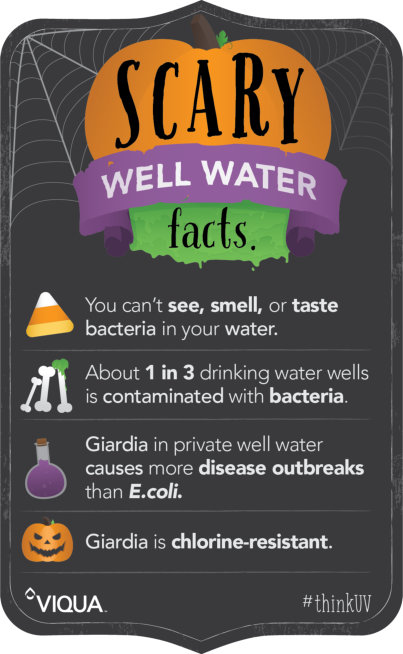
 Lead in Water
Lead in Water
Until it was banned in 1986, lead was commonly used for the service lines that connect water mains to individual homes, meaning upwards of 10 million homes across the country are impacted. According to the Environmental Protection Agency (EPA), approximately 10%- 20% of lead exposure comes from contaminated water. However, the issue is worse for babies consuming formula, as contaminated water can account for upwards to 60 percent of their lead exposure.
If you suspect you have lead in your water, based on the age of your city/ home or simply want to be vigilant, your best options are:
Timing Implications
1920s-1950s: Use of lead joints in water mains common.1986: Use of lead service lines banned. “Lead-free” plumbing materials mandated (up to 8% lead).
2014: “Lead-free” requirements modified to less than 0.25% lead content.
Flush The Water Lines
Before using any water, flush a high-volume tap (like your shower) with cold water for at least five minutes, then run cold water through your kitchen tap for another two minutes before using this water for cooking/drinking. This kind of flush should be done anytime the water has been sitting in the lines for several hours, such as overnight. Even though this is quite wasteful, especially in regions experiencing drought, it’s very effective. Remember, it has to be cold water because hot water will dissolve more lead.Install a complete water treatment system
Often, the go-to solution for lead in water is specially modified carbon filtration. But not all carbon filters are rated for lead removal, so be aware of what you’re installing. If the lead contamination is originating outside your home, then installing a point-of-entry (POE) system is a great option. If your home pipes are a possible source of lead, then short of replacing all your pipes, the next best option would be a point-of-use water treatment system to remove any lead from water used for drinking or preparing food.Did you know?
Pitcher-type filters and refrigerator filters may not be rated for lead-reduction. Check the manufacturer’s specifications or NSF.org
According to the Environmental Protection Agency (EPA), approximately 10%- 20% of lead exposure comes from contaminated water. However, the issue is worse for babies consuming formula, as contaminated water can account for upwards to 60 percent of their lead exposure.
Until it was banned in 1986, lead was commonly used for the service lines that connect water mains to individual homes, meaning upwards of 10 million homes across the country are impacted. But lead can also be released into your drinking water from within your home. Plumbing materials including faucets, pipes, fittings, and solder can become corroded over time and begin to leach lead into your water. This is more likely if your water has high acid or low mineral content. If you have a private water supply, you also need to consider whether the different parts of your well could be a source of lead. It’s important to understand where the lead is coming from before you can determine the most effective approach to protecting your family.

Bacteria and Other Microbes
Between the years 2010-2012, there were nearly 21,000 boil water advisories (BWA) in the USA. A boil water advisory is issued when there is known or suspected microbial contamination in a public water supply. The microbes can be bacteria, viruses, or protozoa, any of which can cause immediate (and sometimes long-term) health issues. The vast majority (67%) of these BWAs were necessary because of breaks and leaks in water pipes or because of loss of pressure in the distribution system. Given that aging and failing infrastructure means decreased reliability and safety of public water supplies, protecting your home with a water disinfection system can provide you the peace-of-mind you need.In the case of bacterial contamination, it’s advisable to have treated water at every tap, so a point-of-entry (POE) system is recommended. If that’s not possible because, for example, you’re in an apartment building, a POU (point-of-use) solution can work well. Ultraviolet (UV) disinfection is commonly used to
protect against microbial contaminants because it adds no chemicals, which means there’s no change to the taste of the water, it’s easy to maintain, and it uses very little energy (a typical home system would use no more energy than a 40W light bulb). Most importantly, it’s effective against the broadest range of microbes. Another POE disinfection option suited to city dwelling is ultrafiltration. And, of course, boiling water for at least 2 minutes before using it can also be relied on in emergency situations, but isn’t very convenient for day-to- day management.
Again, here’s a word of caution. If you’re relying on your refrigerator filter or a pitcher-type filter, check the manufacturer’s specifications. If there’s a warning like “do not use on microbiologically unsafe water”, it can’t be relied on, especially in the event of a BWA.
Disinfection-by-products
Public water systems commonly use chlorination as their primary means of disinfection. However, chlorine reacts with more than just the microbes in the water. It also reacts with any naturally-occurring organic compounds present in the water to form trihalomethanes and haloacetic acids. Some people who are exposed to these disinfection by-products* over many years may experience liver, kidney, or central nervous system problems, and may have an increased risk of cancer. If you wish to minimize your exposure, you’ll need to install an activated carbon filter (GAC) or carbon block filter.Whole home activated carbon filters are recommended to manage exposure due to both ingestion and inhalation. The added bonus is that using a high quality carbon filter will also improve the taste of your water because it removes chlorine. *Applies where exposures are in excess of the upper limit (MCL) set by the EPA.


